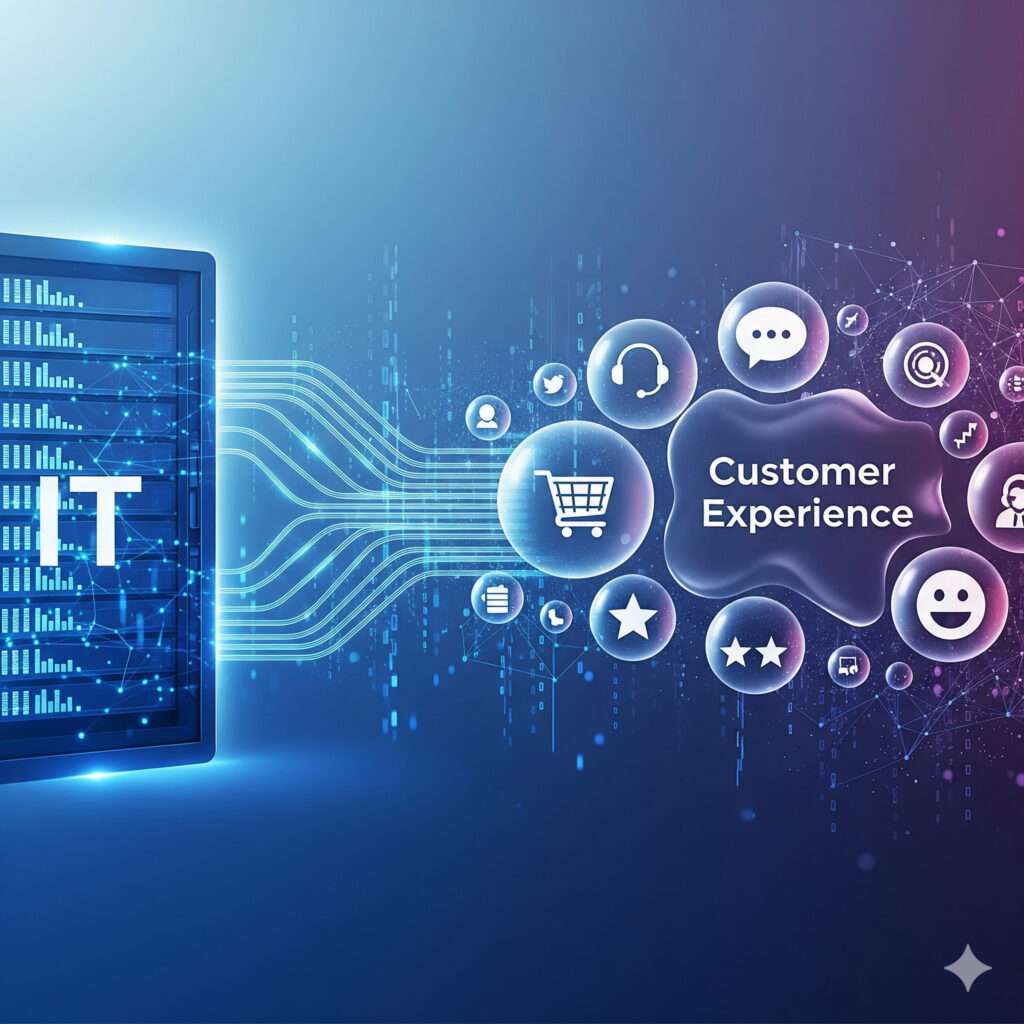The Role of IT in Improving Customer Experience
Customer experience is now one of the most critical factors in the sustainable success of brands. In today’s competitive market, customers often make their first contact with a brand through digital channels, and the experience they have at these touchpoints significantly shapes their perception of the brand. This has radically transformed the role of information technology (IT) teams. IT teams are no longer simply providing technical support, resolving infrastructure issues, or ensuring system continuity; they have become strategic actors directly designing and driving the customer experience.

Customer Experience: Understanding and Measuring
The first step in improving customer experience is understanding it. This analysis process is primarily the responsibility of marketing teams. Marketing teams uncover behavioral patterns by examining the data collected at every stage of the customer journey.
- Click, navigation, and transaction data in web and mobile applications
- Frequency and resolution times of customer support requests
- Feedback and satisfaction surveys
The role of information technology (IT) teams at this point is not to analyze this data, but to ensure the uninterrupted and accurate execution of the analysis process. IT teams ensure the complete and reliable collection of the data needed by marketing teams and ensure the continuous operation of all digital systems.
The performance of critical customer experience touchpoints, such as payment pages, login screens, campaign modules, and survey forms, is the responsibility of IT teams. The fast, secure, and seamless operation of these systems allows marketing teams to conduct robust analyses and make sound strategic decisions.
In other words, while IT teams do not directly analyze customer behavior, they underpin this process by ensuring the sustainability of the entire digital infrastructure that shapes the customer experience. IT teams and monitoring tools provide critical support for early detection of customer experience issues, identifying their source, and developing preventative solutions. This approach both enhances customer satisfaction and improves the company’s operational efficiency.
To deliver a consistent and seamless customer experience, different touchpoints (website, mobile app, call center, physical store, etc.) must work in an integrated manner. IT departments establish the integration infrastructure that connects all these channels, ensuring customers experience a single brand regardless of their location.
Speed, Accessibility, and Uninterrupted Service
Customers expect fast and smooth service. System outages, page load delays, or faulty forms directly negatively affect the customer experience. IT departments contribute to uninterrupted service by using:
- Cloud infrastructures offering high availability,
- Automatic scaling solutions,
- 24/7 monitoring and proactive troubleshooting mechanisms.
Which Monitoring Tools Help Track Customer Experience?
1. Real User Monitoring (RUM) Tools
These follow the behavior of real users on applications or websites.
- Dynatrace Real User Monitoring → Tracks user journeys on web and mobile, providing page load times, click, and interaction analysis.
- New Relic Browser / RUM → Offers real-time user performance and experience metrics.
- AppDynamics End User Monitoring → Monitors user interactions, detects experience issues linked to app performance.
2. Synthetic Monitoring Tools
These simulate user experience for testing and provide proactive alerts.
- Dynatrace Synthetic Monitoring → Tests web and API performance with predefined scenarios.
- Pingdom / Uptrends → Measures webpage load times, uptime, and performance.
- New Relic Synthetics → Continuously monitors experience with automated test scenarios.
3. Application Performance Monitoring (APM) Integrated Monitoring
Evaluates user experience alongside application performance.
- Dynatrace Full Stack Monitoring → Measures front-end and back-end performance on a single platform.
- AppDynamics APM → Combines user experience, server, and database performance.
- New Relic One → Displays all application and user experience data on one screen.
- Instana Observability -> Monitoring the performance of applications end-to-end quickly detects issues and protects the user experience.
4. Customized UX / Frontend Monitoring Tools
Focus on front-end optimization and user experience.
- Hotjar / FullStory / Contentsquare → Visualizes experience with click maps, scroll analysis, and user session recordings.
- Browser DevTools + Lighthouse → Provides technical analysis for page load time, Core Web Vitals, and user experience metrics.
User experience monitoring is not limited to these solutions. Multiple interconnected tools can work together for comprehensive User Experience monitoring!
Improving Customer Experience with IT Monitoring
With IT and monitoring tools, you can instantly detect disruptions on applications or websites. For example, delays or errors on a payment form can be identified before user complaints arise, which is a critical advantage to prevent customer loss.
Analyzing a single complaint with IT monitoring can show whether the performance issue stems from the front-end, back-end, or network sources. Thus, technical teams can quickly make the right intervention and improve the experience.
RUM and Synthetic Monitoring data reveal frequently encountered user problems in advance. IT teams can use this information to prevent future disruptions, ensuring customer experience remains seamless and trouble-free.
Technical metrics such as customer support requests, click and navigation data not only detect problems but also indicate which features need improvement, making customer experience enhancements based on concrete data rather than subjective opinions.
If issues experienced in a specific user segment are detected quickly with monitoring, IT teams can accelerate support processes and offer personalized solutions, increasing the customer’s trust in the brand.
Fill the Form, We’ll Reach Out!


